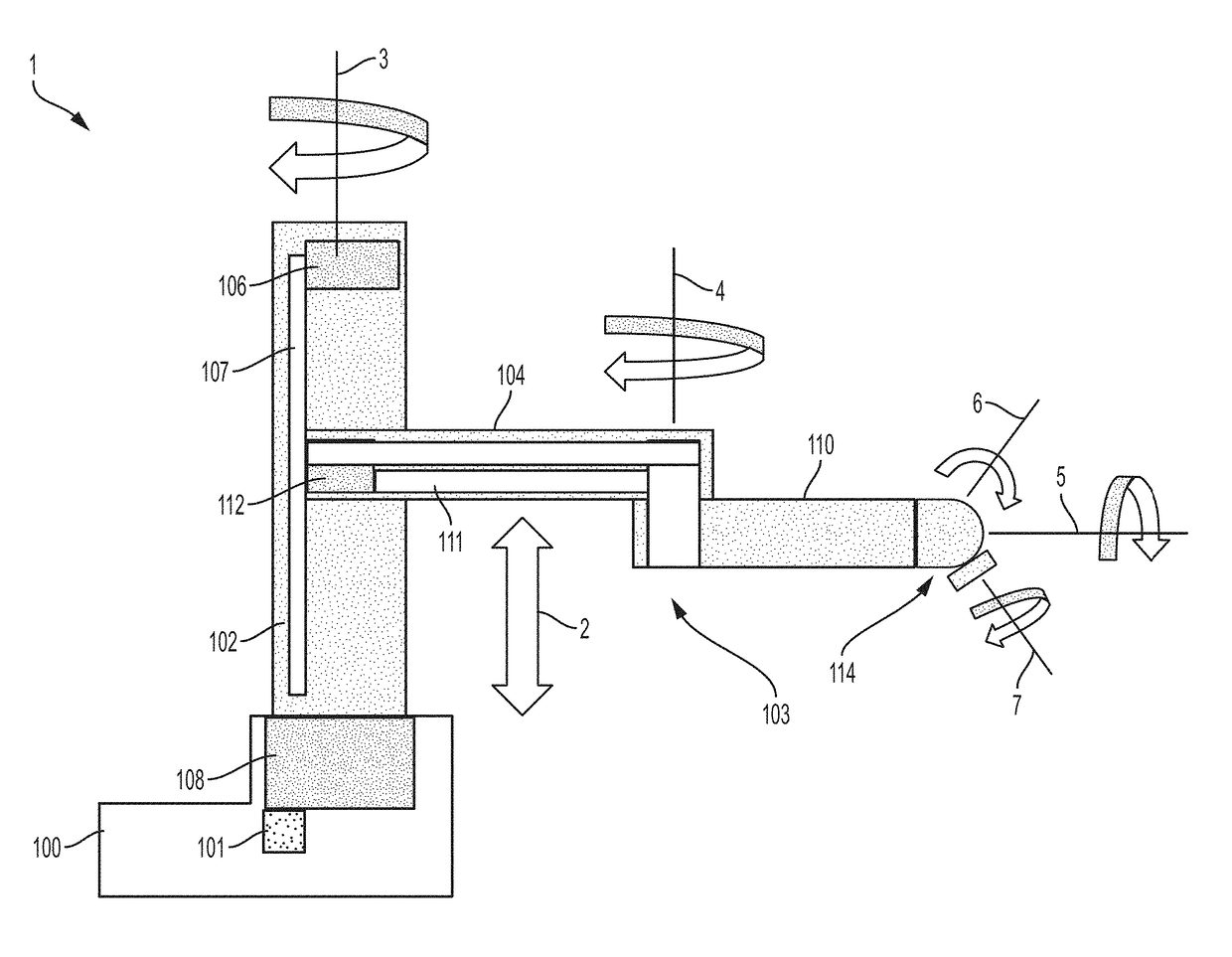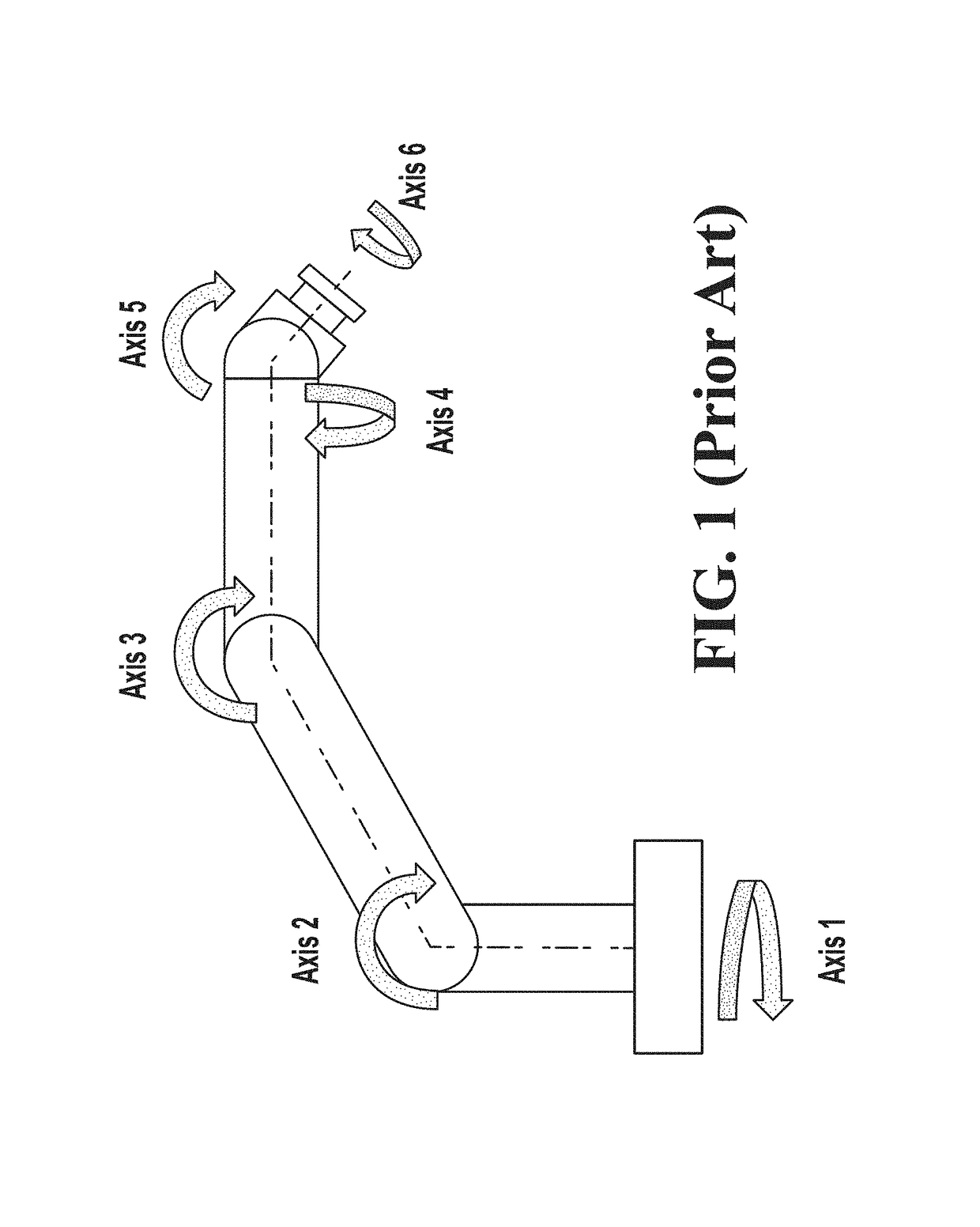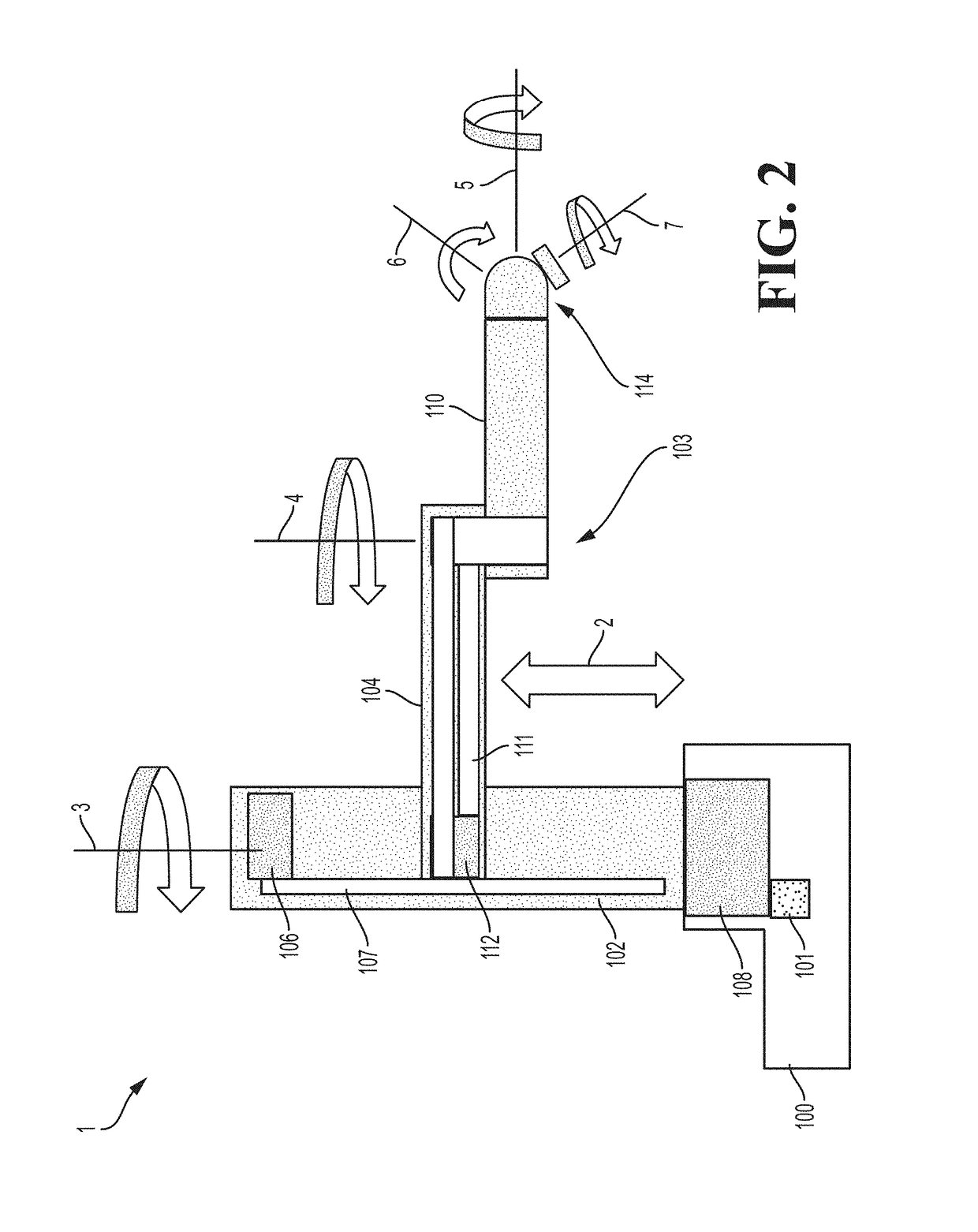Collaborative robot
a robot and collaborative technology, applied in the field of collaborative robots, can solve the problems of reducing effective mass and reflected inertia, and achieve the effect of higher speeds
- Summary
- Abstract
- Description
- Claims
- Application Information
AI Technical Summary
Benefits of technology
Problems solved by technology
Method used
Image
Examples
Embodiment Construction
[0029]It should be understood that aspects of the invention are described herein with reference to certain illustrative embodiments and the figures. The illustrative embodiments described herein are not necessarily intended to show all aspects, but rather are used to describe a few illustrative embodiments. Thus, aspects are not intended to be construed narrowly in view of the illustrative embodiments. In addition, it should be understood that certain features disclosed herein might be used alone or in any suitable combination with other features.
[0030]The safe operating speed for a collaborative robot is determined by the kinetic energy of the moving mass (which is equal to ½ mv2), the motor torque applied during the collision, the compliance (stiffness) of the robot and the region of the person where the robot strikes. The moving mass is composed of the robot payload, the robot structure, and an equivalent mass that represents the forward reflected inertias of the motor rotors and...
PUM
 Login to View More
Login to View More Abstract
Description
Claims
Application Information
 Login to View More
Login to View More - R&D
- Intellectual Property
- Life Sciences
- Materials
- Tech Scout
- Unparalleled Data Quality
- Higher Quality Content
- 60% Fewer Hallucinations
Browse by: Latest US Patents, China's latest patents, Technical Efficacy Thesaurus, Application Domain, Technology Topic, Popular Technical Reports.
© 2025 PatSnap. All rights reserved.Legal|Privacy policy|Modern Slavery Act Transparency Statement|Sitemap|About US| Contact US: help@patsnap.com



